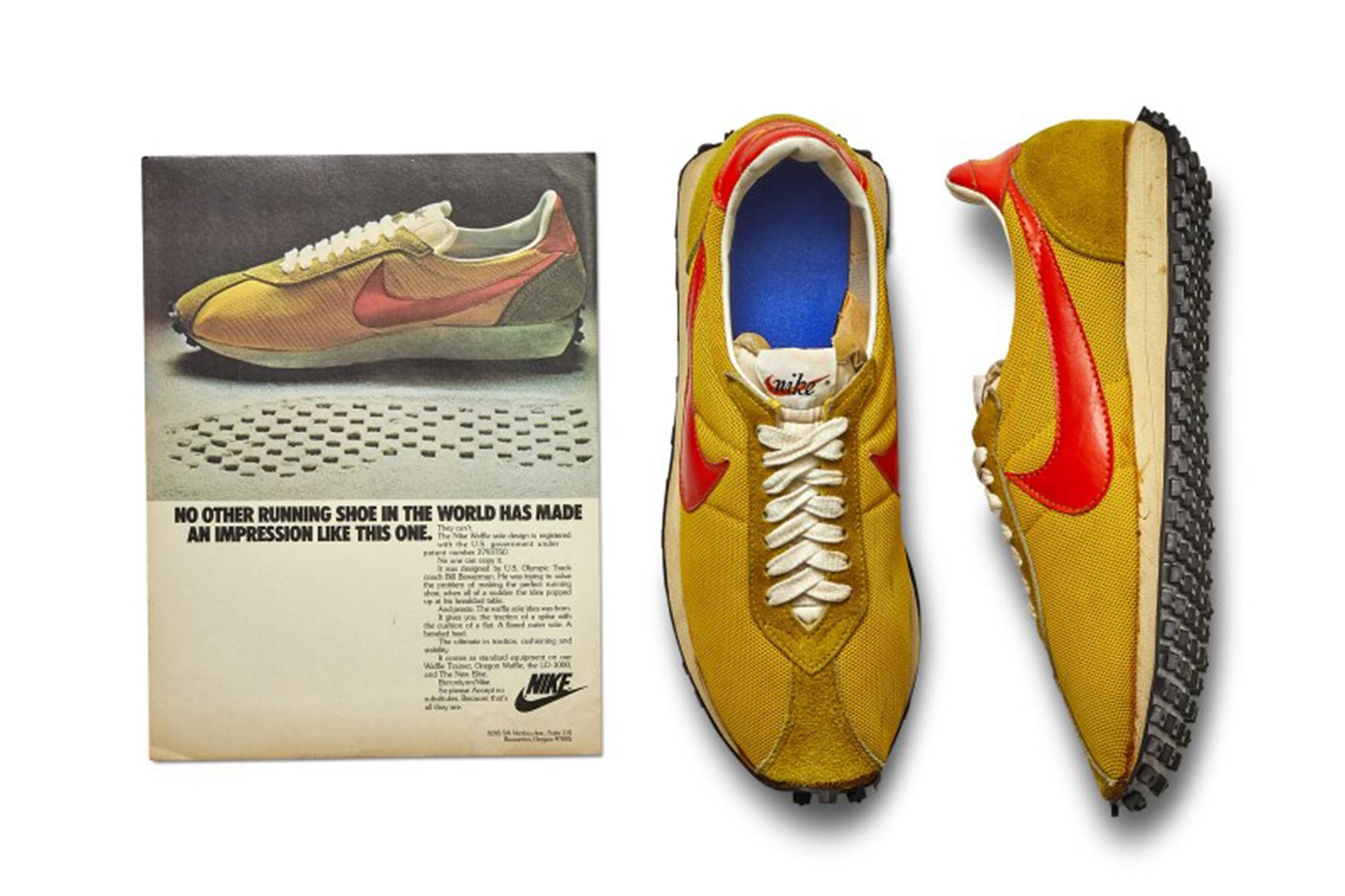Retro Runner Rehab: A Brief History of the Nike LD-1000
Plenty of OG heat has already been resurrected this year, but there’s still stacks more to come. On our watch list of must-cop retro releases is the comeback. This elusive silhouette hasn’t been seen in original form since the historically controversial debut. Originally touching down in the late-70s, the LD-1000 came straight from the mind of Swoosh legend , and it hosted his iconic waffle sole. The biggest drawcard of the LD-1000 though was the wide-AF flared heel unit that was meant to give runners better stability and traction. Despite the faith Team Swoosh had in their fresh innovation, it didn’t go to plan and actually caused injuries, which led to an infamous product recall.
Not only has a resurrection been confirmed for later this year, but leaks surfaced at the start of this year that the running shoe will be resurrected as part of a collaboration – with a GR edition to follow in ‘OG Blue’.

Nike launched their controversial LD-1000 during a halcyonic period in Swoosh history where they were signing athletes and coming up with fresh innovations. Their latest, which debuted to the world in 1977, was the LD-1000 and was beyond anything seen before in the sneaker industry. In today’s day and age, it doesn’t seem like much, but back in the 70s, a dramatically flared heel that resembled a water ski was way ahead of its time. , , remembered the model and concept in his memoir Shoe Dog: ‘The theory was that a flared heel would lessen torque on the leg and reduce pressure on the knee, thus lowering the risk of tendinitis and other running-related maladies’. The LD-1000 was designed by Bowerman with heavy input from Nike’s in-house podiatrist, and runners took to the innovative product straight away. While the new sneaker was made in good spirit, it turns out the flared heel had devastating consequences for runners. Knight recalls ‘if a runner didn’t land just right, the flared heel could cause pronation, knee problems, or worse’. Nike had to issue a recall for their LD-1000 shortly after discovering this pitfall and braced themselves for public backlash. Luckily, that never came, and runners were actually grateful for their efforts in attempting innovative new concepts. Back in those days, Nike was more willing to venture outside the norm, trying progressive concepts that sought to improve an athlete's experience. It was a different time, especially for footwear brands that weren’t looking to push the envelope on what a running shoe cloud be.
Although the Nike LD-1000 wasn’t successful at first, the innovative model laid the groundwork for many other footwear options for the modern day. A recent notable flared heel arrived in 2021 through Hike GTX, described by the brand as ‘part-hovercraft and part-hiking boot’. If that isn’t proof of golden-era Nike being ahead of its time, we don’t know what is. But, we do wish that Bowerman was around to see his design influence the modern day. According to Knight, Bowerman ‘got very down on himself’ following the LD-1000’s failure. Despite multiple pep talks and pushes to keep inventing, nothing could get through to the veteran Swoosh designer; however, he did finally spark Bowerman’s competitive side by mentioning the air-injected sole they had in development. This lit the innovative spark for Bowerman once again.
It’s been a hot minute since we’ve seen the LD-1000 in sneaker headlines. The last time was circa 2014 when Nike created a model that merged the 70s runner with the then-new By utilising the LD 1000’s sleek upper and the Roshe’s chunky sole, they crafted the – which was a favourite for The legendary Japanese designer collaborated multiple times on the crisp silhouette, decking it out in simplistic tones with Fragment midsole branding. It was also famously part of the – a partnership between Fujiwara, former Nike CEO and Swoosh designer – and Fujiwara brought a full-length Air unit to the bottom of the Roshe LD-1000. The model was a favourite around the 2010s era of sneakers, but it was slowly phased out towards the end of that decade.
Apart from the Roshe version, the LD-1000 hasn’t been seen for almost fifty years in OG form. Adding to the model’s elusiveness is that original pairs of the LD-1000 rarely, if ever, turn up. This was most likely due to the recall, but one did surface not long ago at auction house – with a four-figure price tag. An ultra-rare find, the uppers of this pair were crafted with Japanese-made yellow mesh and electric blue Spenco insoles. The first editions were also made with the classic Nike script tongue logo and orange Swoosh, which is pictured above. Interestingly, the style code for this LD-1000 is the low number of 2300.
In Shoe Dog, Knight recalls the LD-1000 as ‘a literary genius’s novel that didn’t quite come together’. The historic model is an integral, lesser known part of Swoosh lore that continues to have influence in the sneakersphere today. Ever since the leak and confirmation of a retro, fans have been patiently waiting for word on a release date, but still Nike hasn’t come through. The colab is rumoured to drop at the end of 2024, so we’ll be watching and waiting for the return of the LD-1000.
